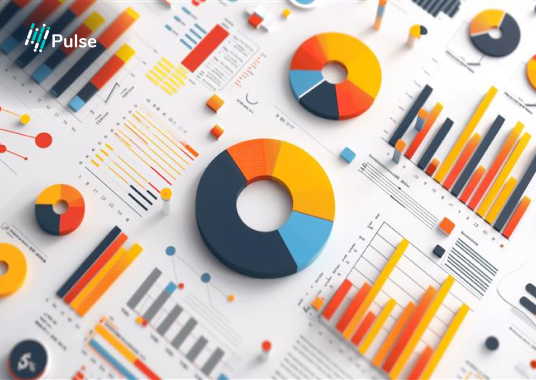Financial analysis has always been central to smart business decisions. It’s how leadership understands what’s working, what’s not, and where to head next. However, how we analyse financial data today differs from how we did it five years ago.
Back then, business financial analysis often meant pulling together spreadsheets, seeing static reports, and relying heavily on past data to explain what had already happened. It was helpful but reactive. In a fast-changing business landscape, that’s no longer enough.
Five years ago, most businesses leaned on descriptive analytics, essentially reporting on the past. Finance teams tracked key metrics, compared results month-over-month or year-over-year, and worked hard to pull meaningful insights from multiple systems. The tools were basic, and the process was time-consuming.
Finance professionals were tied down to menial jobs such as manual data entry, reconciling figures across tools, and troubleshooting report discrepancies. This worked, but it left little time for strategy.
The Rise of Tech-Driven Financial Intelligence
Over the last few years, technological innovation has completely transformed business finance analysis. Let’s break down a few of the biggest shifts:
1. Big Data and Analytics
Today’s businesses aren’t just collecting more data. Instead, they’re using the collected data better. With access to larger datasets and more sophisticated analytics platforms, finance teams can dig deeper into performance, spot trends earlier, and measure success more precisely.
2. Artificial Intelligence (AI) and Machine Learning
These are actively transforming how businesses do financial analysis. Imagine tools that can forecast revenue, spot discrepancies, and even recommend improvements, all in real time. This may sound like something out of the future. However, all this is happening now.
AI-driven tools for data management are already making waves in businesses across the UK. Around 9% of firms use them to handle data, followed by 8% using natural language processing and 7% leveraging machine learning. Also, it’s not just for big corporations; small and medium-sized businesses are jumping on the bandwagon too. Financial insights with these technologies are quicker, more precise, and far more intelligent, enabling teams to make better decisions.
3. Blockchain Technology
While not mainstream for every business, blockchain is changing how we think about financial records, making transactions more transparent and secure. It’s especially promising for audit trails and compliance-heavy industries.
4. Cloud Computing
Cloud-based platforms like Pulse have removed barriers to data access. Teams can now view real-time financial data anytime, anywhere, and make faster, better decisions. No more waiting for month-end reports or switching between systems.
5. Robotic Process Automation (RPA)
RPA tools handle repetitive finance tasks like invoice processing and reconciliations, freeing finance teams to focus on value-added work like forecasting and scenario planning.
The Future of Financing Analysis
1. Enhanced Predictive Analytics
We’re moving beyond describing what happened to confidently predicting what will happen. Future finance teams will rely more on real-time data models to forecast revenue, cash flow, and market risks with a higher degree of accuracy.
2. Integration of AI and Human Expertise
AI is strong, yet it cannot substitute human judgement. The future of financial analysis is in the integration of machine-based insights and human intuition. Finance professionals will take on a strategic advisor role and interpret data, uncover opportunities, and direct growth.
3. Personalised Financial Insights
Instead of standard reports, expect tailored dashboards and alerts based on your role, KPIs, or goals. Platforms like Pulse are already heading in this direction, giving teams real-time visibility into the exact metrics they care about.
Conclusion
The role of financial analysis has shifted from “What happened?” to “What should we do next?”
Adapting to this new way of working isn’t optional for businesses looking to stay competitive. Instead, it is essential. Leaders need timely insights, accurate forecasting, and a single source of truth they can trust. That’s precisely where platforms like Pulse step in. Built for modern finance teams, Pulse connects your data across platforms, delivers live dashboards, and helps you turn numbers into next steps.
Ready to modernise your financial analysis? Explore how Pulse can help you make faster, more intelligent, more strategic decisions. Book a demo and see the future of finance in action.

















